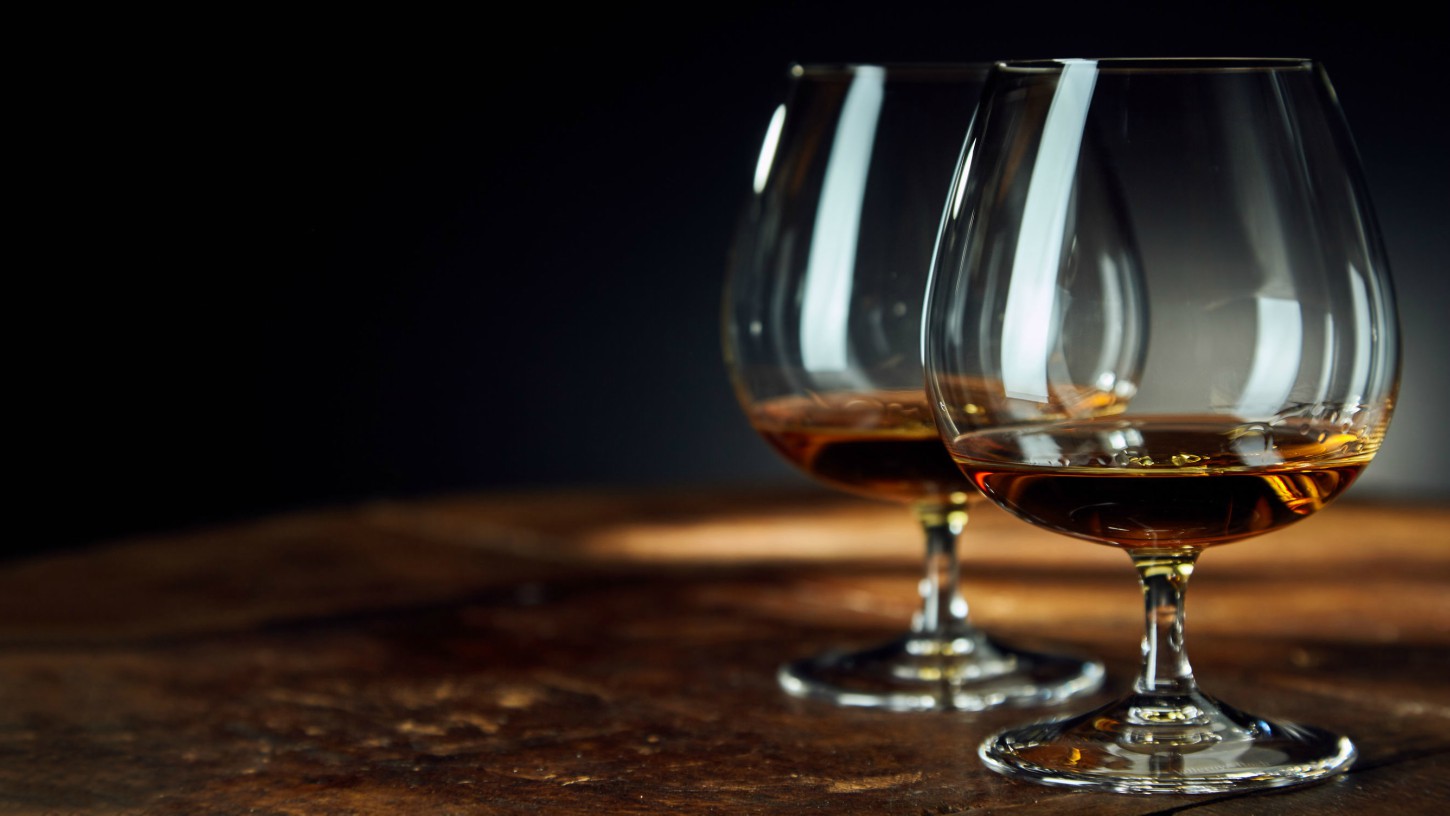
Brandy 101 - Regions, Styles, and Recipes
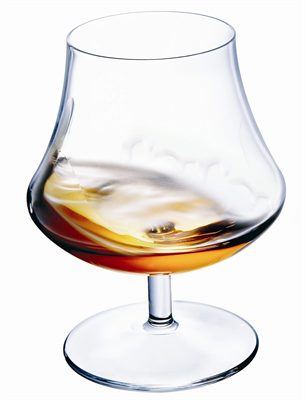 The resurgence of classic cocktails has paved the way for a lesser known category to fall back into favor: brandy. But what exactly is brandy? The word itself is derived from the Dutch word “brantwijn,” which translates to “burned wine." That crude description is actually quite fitting. It's produced one of two ways. The most common method is to distill from wine/grapes or other juices such as apple, pear, or cherry. The other method used is to distill from pomace, the leftover bits from the wine making process such as skins, pulp, and seeds.
The resurgence of classic cocktails has paved the way for a lesser known category to fall back into favor: brandy. But what exactly is brandy? The word itself is derived from the Dutch word “brantwijn,” which translates to “burned wine." That crude description is actually quite fitting. It's produced one of two ways. The most common method is to distill from wine/grapes or other juices such as apple, pear, or cherry. The other method used is to distill from pomace, the leftover bits from the wine making process such as skins, pulp, and seeds.
As with other spirits, brandy can either be aged or unaged. The majority is aged in French oak barrels and is classified as either immature (under two years) or is aged. Some producers, particularly Spanish producers, use the solera method of aging; each year the barrels are dumped into different barrels.
It can also be broken down into specific styles. Many of these styles are based on region, such as Armagnac, Cognac, and Calvados. Then there’s unaged eaux-de-vie, which is simply distilled fruit that is often rich in aromatics, but dry and neat on the palate. Pisco is the South American varietal that is produced from pomace and is further categorized by region.
The world of brandy is diverse, but all share a similar start. The end result is a spirit that is rich, complex, and full of history. So take that dusty bottle of your back bar and pour yourself a snifter. Brandy should be experienced in the moment, and who doesn’t love a good drink while they learn?
FRENCH BRANDY
“Give me the Henny, you can give me the Crissy. You can pass me the Remi, but pass the Courvoisier!” – Busta Rhymes "Pass me the Courvoisier" lyrics
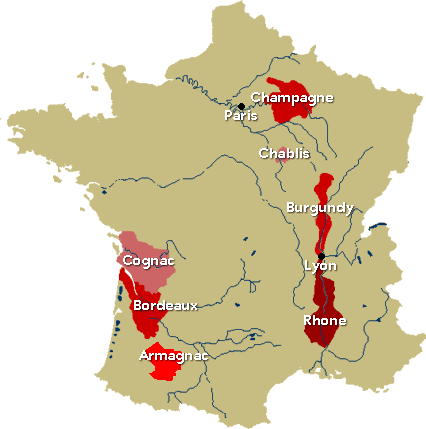 Often times a main ingredient on any cocktail list and definitely a staple in any hip-hop song, Cognac takes a front seat to its older and less notorious sibling, Armagnac. Both are a delicious and classy to way to end your meal, as they aid in digestion, but ultimately differ in taste and how they are made. So, let’s talk about the differences...
Often times a main ingredient on any cocktail list and definitely a staple in any hip-hop song, Cognac takes a front seat to its older and less notorious sibling, Armagnac. Both are a delicious and classy to way to end your meal, as they aid in digestion, but ultimately differ in taste and how they are made. So, let’s talk about the differences...
Cognac and Armagnac are both made from French white wine grapes. Cognac traditionally uses the Ugni Blanc grape, while Armagnac uses three additional grape varietals: Folle Blanche, Colombard, and Baco Blanc. Also, which you may or may not be surprised to learn, Cognac comes from the Cognac region in France, and Armagnac comes from Armagnac. While these areas appear close in proximity, the 100-mile trek between the two regions plays a huge part in how these brandies will eventually taste. And we can’t give pop-culture all the credit for Cognac’s popularity - Cognac’s geographical location made it easily accessible to the British and Dutch markets back in the day, while its landlocked relative had trouble getting their product to the local ports.
Grapes and location are just the start on how these two brandies vary. The next difference is production which has a huge effect on how the brandies will smell and taste in the end. Armagnac is only distilled once through a column still. Hine Cognac, for example, goes through two rounds of distillation in pot stills, which some might argue that this results in a fuller, more flavorful spirit.
When it comes to the important step of aging, the two brandies also differ. Armagnac must be aged for a minimum of one year to reach the VS (Very Special) standard, while Cognac needs to be aged for at least two years. They also use different kinds of barrels. Cognac typically sits in Limousin and Tronçais – a type of white oak which imparts subtle, gentle vanilla flavors. It’s permitted for Armagnac to be aged in these as well, but it can also be aged in Gascon oak barrels, which impart more masculine flavors. Lastly, similar to wine, it is more common to see specific vintages from Armagnac, while Cognacs are usually blends of certain vintages.
AMERICAN BRANDY
While consumers are familiar with international brandy brands like Hennessey and Remy Martin, there’s more going on in United States brandy production than one would think. Foundationally, brandy is any fruit-based distillate, the most common being grapes. As with wine, different varietals and production methods cause variation in flavor profiles.
A brandy made with Pinot Noir, Muscat, or Semillon, offer different flavors and aromas which are blended and aged for a unique and memorable experience. Unlike Europe, American brandy has no restrictions as to how it’s produced, or for how long it is aged, offering the opportunity for more creativity and exploration within the category, as opposed to Cognac or Armagnac which adhere to strict production guidelines. Producers like Germain-Robin bring a fresh sense of American creativity and ingenuity to this ancient spirit, with their antique pot still deep in the hills of Mendocino, California. The proximity of local, quality grape varieties, and their expert barrel-aging program make their products unique, flavorful, and extremely elegant.
The story of brandy continues into other fruit-based spirits, like the irresistible St. George Distilling Raspberry and Pear brandies and liqueurs. Dozens of pounds of fruit are distilled in their mash tuns to create rich fruit-forward spirits perfect for warm or cool weather cocktails. These unsweetened spirits let the profile of the fruit shine, making an excellent option for bartenders and storeowners searching to add depth to their brandy section with high-quality and price-friendly spirits. Craft-minded drinkers would be remiss in overlooking perhaps the most American, yet underappreciated brandy, Applejack.
This apple based spirit saw marked popularity prior to Prohibition in the 19th Century, and subsequently collapsed under the pressure of changing markets and mass-produced alternatives. Brands like Laird’s Applejack have long held the banner for apple brandy as smaller distilleries take up the banner of brandies. Paired with a dessert, or enjoyed alone, or even a modifier to a cocktail, brandies are an excellent option to add dimension and flavor to glasses across the country.
BRANDY BY ANY OTHER NAME: CALVADOS, PISCO & EAU DE VIE
We’ve talked Brandy basics as well as French and American regions, but let’s dig a little into three unique styles: Calvados, Pisco, and Eau de Vie.
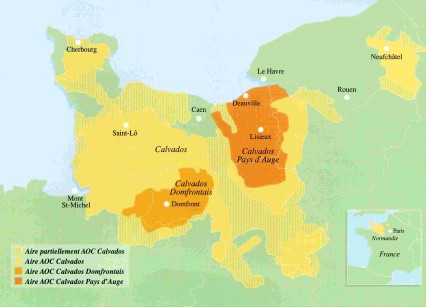 Calvados. We could write an entire blog just on Calvados! A favorite of ours, C. Drouin, was born in Normandy, France over five centuries ago; this distilled cider offers a lot of history as well as gastronomic pairings. Over 200 apple varietals - or pears - can be used in Calvados. There are a few AOCs for Calvados, with each AOC dictating the distillation method, whether single column or pot still, along with aging minimums (at least two years) in either new or used oak. Some allow a combination of the two.
Calvados. We could write an entire blog just on Calvados! A favorite of ours, C. Drouin, was born in Normandy, France over five centuries ago; this distilled cider offers a lot of history as well as gastronomic pairings. Over 200 apple varietals - or pears - can be used in Calvados. There are a few AOCs for Calvados, with each AOC dictating the distillation method, whether single column or pot still, along with aging minimums (at least two years) in either new or used oak. Some allow a combination of the two.
AOC Calvados Pays d’Auge is considered the highest quality AOC. When reading Calvados labels, look for the age indications: Trois étoiles, Trois pommes, V.S. means barrel aged for a minimum 2 years. Vieux or Reserve means barrel aged for minimum 3 years. V.O., Vieille Reserve, and V.S.O.P. all indicate a minimum of four years barrel aging. Extra, X.O, Napoléon, Hors d’âges, Très Vieille Réserve, and Très Vieux each mean minimum 6 years barrel aging. Definitely worth the chance to taste different age statements side by side – we love doing that to see how Calvados softens and changes.
 Pisco. Definitely one of those spirits worthy of some sipping time. This grape wine based brandy comes from Peru and Chile. In the US, you’re more likely to find Peruvian Pisco – and some argue Peru is the only true Pisco producer – so we are going to focus there. Like Cognac, Armagnac, and Brandy de Jerez, Pisco is made from grapes (only eight varietals allowed). Unlike its counterparts, Pisco must not be aged and must be made from fermented grape juice (wine) as opposed to pomace (the stems/leftovers from winemaking).
Pisco. Definitely one of those spirits worthy of some sipping time. This grape wine based brandy comes from Peru and Chile. In the US, you’re more likely to find Peruvian Pisco – and some argue Peru is the only true Pisco producer – so we are going to focus there. Like Cognac, Armagnac, and Brandy de Jerez, Pisco is made from grapes (only eight varietals allowed). Unlike its counterparts, Pisco must not be aged and must be made from fermented grape juice (wine) as opposed to pomace (the stems/leftovers from winemaking).
Pisco can only be distilled once and to proof and must neither be aged, nor adjusted with any additional agents (such as sugar or color). Peru has strict guidelines for Pisco production with three categories of Pisco: Puro, Acholado and Mosto Verde. Puros are single varietal grape distillations. Acholados blend two or more grape varietals. Mosto Verdes differentiates how the Pisco is made – they distill the wine before it finishes fermentation for a fuller (and more difficult to produce) Pisco. Barsol, for example distills three different mosto verde varietals. There’s so much more to say about Pisco; since we’re limited on space here, just grab a bottle and start planning your trip to Peru.
Eau de Vie. Literally translated “water of life,” this term and therefore the spirits with the name can be confusing. Different regions have varying interpretations of this term. For instance, the French are more specific as eau de vie means any spirit – a fruit distillation has to be called eau de vie de fruit or eau de vie de vin for grape/wine-based spirit. Since we’re in the ol’ USA we’ll stick to the English-speaking take on eau de vie to say it’s a fruit brandy. We can find these clear and bold fruit distillations all around the world, too.
In the Caribbean we might enjoy a pineapple or coconut eau de vie, and in North America and Europe, we will find pear, raspberry, or apple eau de vies, to name a few. Some find these spirits to be surprising upon first sip because most of the time they are unaged. The bouquet screams ripe fruit but the palate hits dry, dry, dry! Try pairing an eau de vie with some fatty cheeses or charcuterie to play with the nose-to-palate experience.
EASY BRANDY COCKTAILS
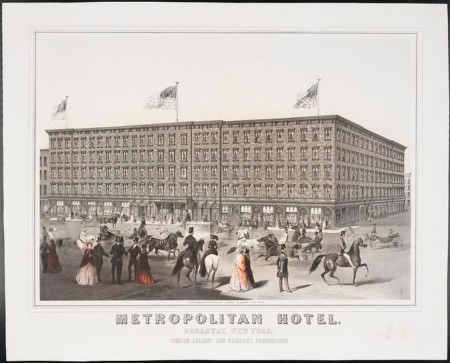
The Metropolitan Cocktail: History
The identity of the hero-among-humankind that created this drink has been lost. What we can safely assume though is that it was created by some inspired genius at one of The Metropolitan Hotels in the early part of the late 19th to early 20th century. What we can definitively say is that it was the original cocktail utilizing brandy and vermouth. Drinking this is to step back in time to an age when the hotel bar (and barman) were celebrated for their quality and ingenuity.

The Metropolitan Cocktail: Recipe
2 oz Craft Distillers Millard Fillmore Brandy
1 oz Vermouth Routin Rouge
3 dashes Angostura Bitters
Combine ingredients in mixing glass or tin, stir for 8 seconds and strain into a coupe or martini glass. Garnish with a lemon twist.

The Sidecar Cocktail: History
No listing of brandy cocktails could be considered complete without at the very least mentioning the Sidecar. This is easily the most widely recognized brandy cocktail and survived the dark ages when the cocktail craft had waned.
The Sidecar cocktail recipeThe drink itself is a descendant of the Jerry Thomas’s Brandy Crusta and has been linked to either Buck’s Club in London or Harry’s Bar in Paris. Either way, each story has an Army captain rolling up in a sidecar and requesting the drink. Like a large of number of classic cocktails, its exact origins have been lost but its the stories that make the cocktail unique and alluring.
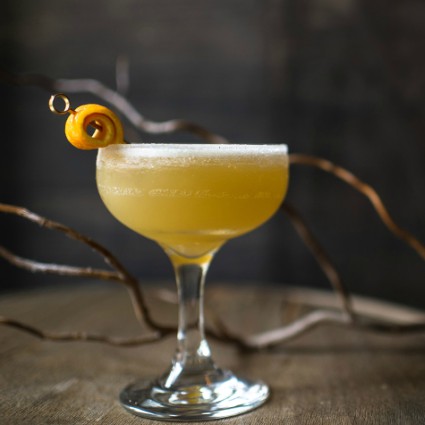
The Sidecar: Cocktail Recipe
2 oz H by Hine Cognac
.5 oz Lemon Juice
.25 oz Giffard Triple Sec
Combine ingredients in mixing glass, shake with vigor, strain into a martini glass. If you really want to have fun, add a sugar rim!
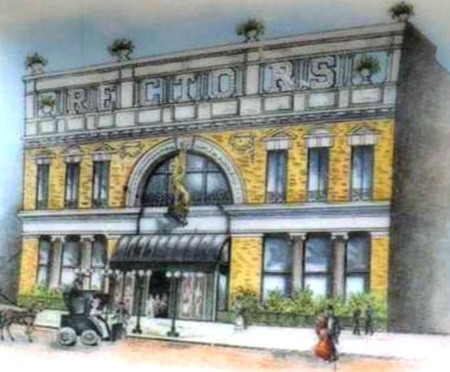
Brandy Alexander: Cocktail History
This cocktail has perhaps the murkiest of the three cocktails mentioned. According to Gary Regan the original Alexander has been attributed to Troy Alexander at Rectors, which had been the finest lobster spot in the city pre-prohibition, in New York around the turn of the 20th century. The Brandy Alexander on the other hand has less clarity. One story has it being created for the wedding of Princess Mary and Viscount Lascelles around 1922. This is controversial and has yet to be confirmed. Beyond that Tsar Alexander II believed it was named for him as did an opera critic named Alexander Dragon.
The drink itself had been featured in the Mary Tyler Moore Show and was a rumored favorite of Ringo Starr and John Lennon. The latter having been quoted as calling it his “milkshake”. Regardless of any of this, it history is storied and its quality loved.
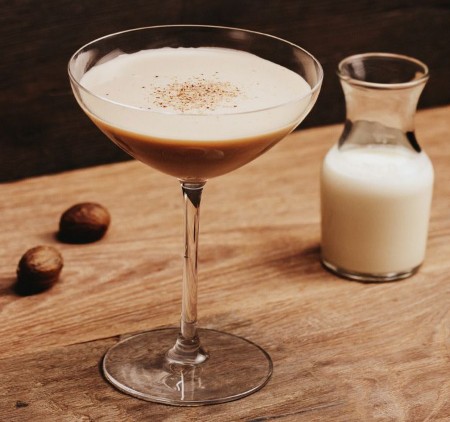
Brandy Alexander: Cocktail Recipe
2 oz Germain-Robin Craft Method Brandy
1 oz Tempus Fugit Creme de Cacao
1 oz Heavy Cream
Combine all ingredients in a cocktail shaker and shake vigorously for 15 seconds then strain into a martini glass. Garnish with fresh grated nutmeg.